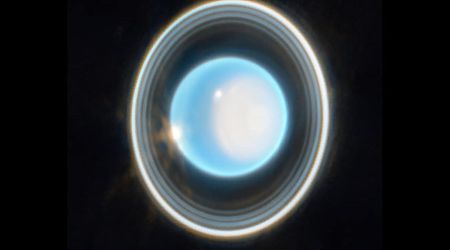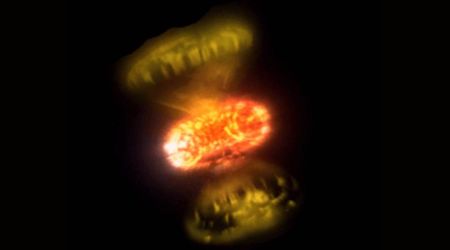NASA's Psyche spacecraft switches to backup propellant line after thruster shutdown

NASA's Psyche spacecraft, currently en route to its namesake asteroid, experienced a shutdown of its electric propulsion thrusters in early April. This occurred after a pressure drop was detected in the primary line supplying xenon propellant to the thrusters. To resolve the issue and reactivate the propulsion system, NASA has opted to switch to a backup propellant line. The agency had been investigating the problem and aiming to get the thrusters operational again by mid-June, as per SpaceNews.

Earlier this week, on May 28, NASA revealed the cause of the propulsion problem: a component within a valve in the original propellant line was no longer functioning correctly, obstructing the flow of xenon to the thrusters and leading to the observed pressure drop. Consequently, NASA decided to implement one of their previously considered solutions: activating a backup propellant line. This alternative line is now operational, and the agency anticipates restarting Psyche's thrusters by mid-June. To prevent a recurrence of the issue, NASA plans to keep a similar valve in the backup propellant line permanently open.

This use of electric thrusters is crucial for Psyche's journey, which includes a Mars gravity assist in May 2026, leading to its arrival at the asteroid Psyche in August 2029. Once in orbit, the spacecraft will meticulously study the large metallic asteroid, which scientists hypothesize could be a remnant of a planetesimal's core that never fully formed into a planet. While this propellant valve issue marks the first significant problem reported since Psyche's October 2023 launch on a Falcon Heavy, the $1.2 billion Discovery-class mission had faced substantial development challenges before launch, resulting in a delay of over a year and a 20% increase in its overall cost.
The spacecraft itself is a collaborative effort with NASA's Jet Propulsion Laboratory (JPL) in southern California, which provides the main computer, flight software, fault-protection systems, and most of the telecommunications system. The main body of the spacecraft and the majority of its engineering hardware systems were built by Maxar Technologies, based in Palo Alto, California. Beyond its primary mission, Psyche also serves as a testbed for innovative technology. It carries the Deep Space Optical Communications (DSOC) experiment — a NASA initiative designed to evaluate the use of optical or laser communications for transmitting data beyond the Moon, as reported by NASA.

In terms of its physical presence, the Psyche spacecraft is remarkably large when its solar panels are fully extended. These panels, spanning 81 feet (25 meters) by 24 feet (7.3 meters), are roughly the size of a tennis court. The spacecraft's main body, or bus, measures 16.1 feet (4.9 meters) tall (including the 6.6-foot — 2-meter — booms for two instruments), 7.1 feet (2.2 meters) wide, and 7.8 feet (2.4 meters) deep. At launch, the Psyche spacecraft weighed about 6,056 pounds (2,747 kilograms), including the Deep Space Optical Communications (DSOC) demonstration. The total launch mass, primarily the rocket, was weighed in at 3.16 million pounds (1.43 kilograms). Two five-panel, cross-shaped solar arrays power the spacecraft, producing 21 kilowatts of power near Earth and 2.3 to 3.4 kilowatts in the asteroid orbit.









